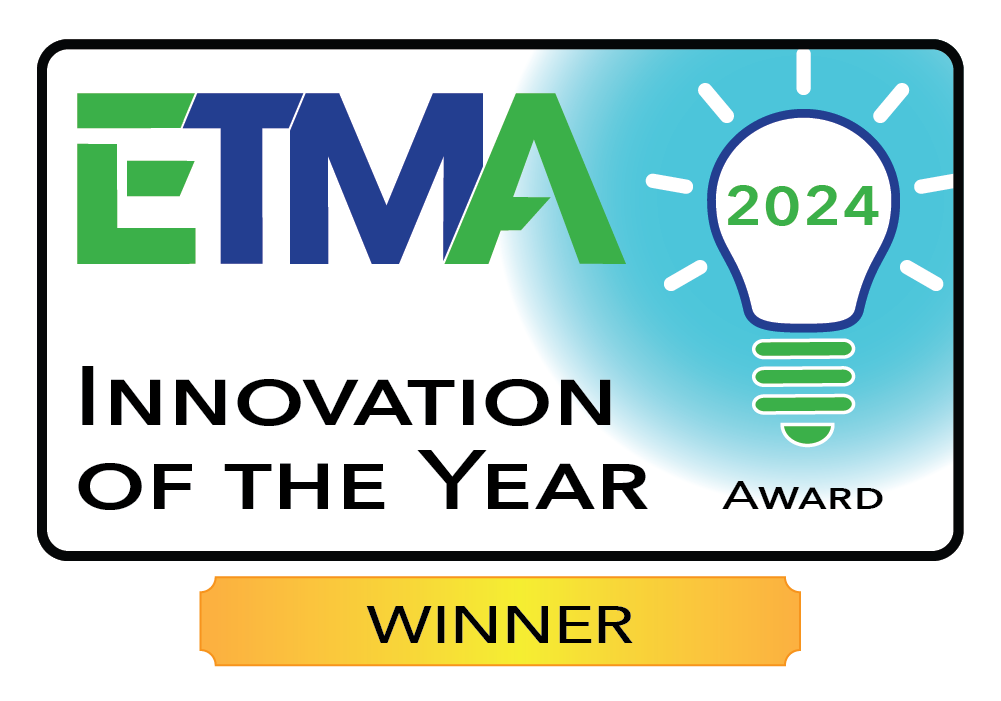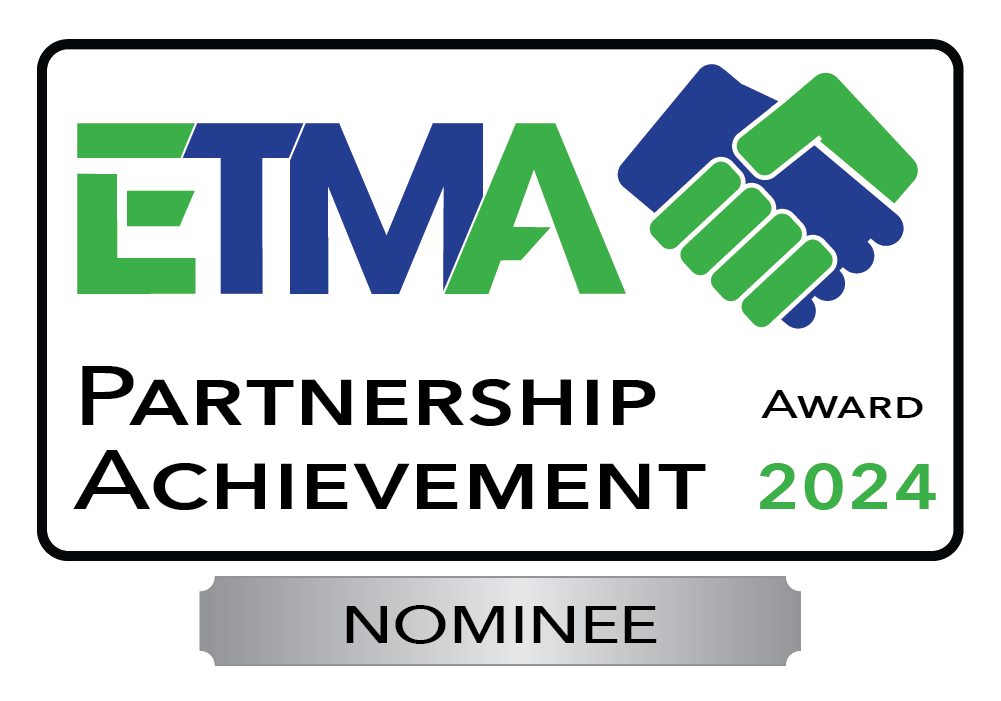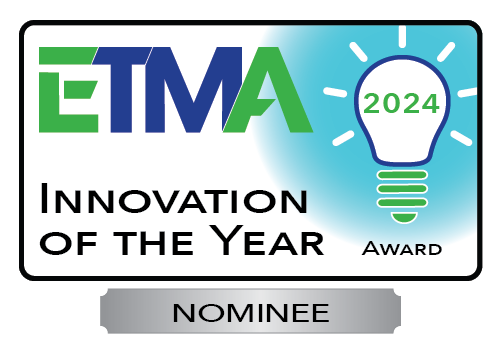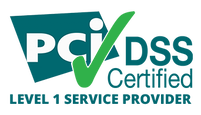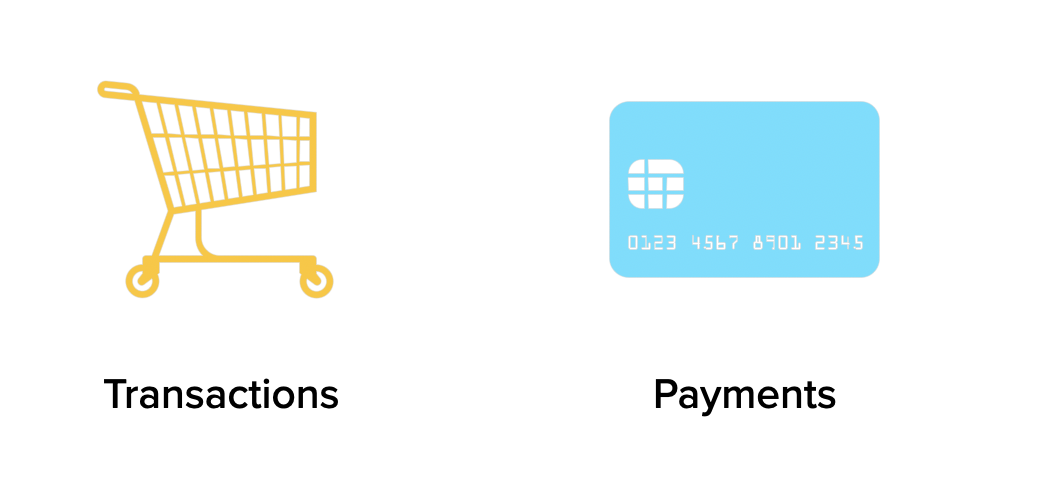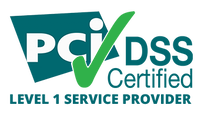|
Learn how to upload a file as part of your Template using the Weeldi Recorder Weeldi Wins Innovation of the Year Award at the ETMA - Enterprise Technology Management Conference4/15/2024
Innovation of the Year
SAN FRANCISCO, CA April 15, 2024 - Weeldi is proud to announce that it has been awarded the Innovation of the Year award at the ETMA - Enterprise Technology Management Association conference held in Puerto Rico this past week. This recognition celebrates Weeldi's groundbreaking Web Automation Studio and its profound impact on the Enterprise Technology Management sector. Weeldi's Web Automation Studio garnered attention from industry leaders for its transformative capabilities in simplifying stable, scalable web automation for enterprises. This award underscores Weeldi's dedication to addressing the automation gap prevalent in the Enterprise Technology Management industry, where accessing and utilizing vendor APIs can be challenging. The Weeldi Automation Studio represents a significant advancement in web automation technology. It empowers enterprises to create and manage stable, scalable automations with No Coding required. This user-friendly approach makes complex tasks more accessible to all users, irrespective of their expertise level. "We are honored to receive the Innovation of the Year award at the ETMA conference," said Mathieu Guilmineau, Co-Founder and CTO at Weeldi. "This recognition reaffirms our commitment to innovation in web automation and making it accessible to all users. We would like to thank ETMA and industry leaders for this very special award.” With this recognition, Weeldi remains dedicated to its mission of innovation and empowerment. The company aims to continue its efforts in making web automation stable, scalable, and user-friendly, enabling all users to automate their most time-consuming and tedious tasks on the web. About Weeldi Headquartered in the San Francisco Bay Area Weeldi enables companies of any size or technical ability to stably automate processes on the web, at scale, through its web service API or user interface — with no coding required. Weeldi nominated for the Partnership Achievement Award and Innovation of the Year Award
SAN FRANCISCO, CA March 28, 2024 — Weeldi the leading innovator in no code web automation, is thrilled to announce its nomination for two prestigious awards: the Partnership Achievement Award and the Innovation of the Year Award by ETMA, the Enterprise Technology Management Association. Partnership Achievement Award Weeldi has been nominated for its exceptional partnership with hyperautomator and vendor expense management leader, AMI Strategies. This nomination recognizes the collaborative effort between Weeldi and AMI Strategies to automate tens of thousands of tedious tasks across hundreds of vendor web portals globally in Telecom, Technology, Mobile and Utilities. This partnership has enabled automation in areas where APIs are unavailable, incomplete, or difficult to access, thereby streamlining processes and enhancing efficiency. Innovation of the Year Award Weeldi's groundbreaking innovation, the Weeldi Automation Studio, has been nominated for the Innovation of the Year Award. This recognition highlights the Studio's revolutionary capabilities, empowering non-developers to build and manage stable, scalable web automations in just minutes, without the need for coding. The Weeldi Automation Studio represents a significant advancement in web automation technology, making it accessible and user-friendly for any user in the enterprise. "We are excited to receive dual nominations by ETMA," said Moe Arnaiz, CEO at Weeldi. "This is a reflection of our laser focus on delivering measurable value to our customers through innovation. We look forward to showcasing our achievements and connecting with Enterprise Technology Management leaders at the event in Puerto Rico." About Weeldi Headquartered in the San Francisco Bay Area Weeldi enables companies of any size or technical ability to stably automate processes on the web, at scale, through its web service API or user interface — with no coding required. 10 reasons web automation is essential for expense management apps .
Web Automation for Expense Management Applications The effectiveness of an expense management application relies heavily on the quality of the data driving it, and the standard of data in expense management is determined and gauged through 3 crucial factors: accuracy, freshness, and breadth. Below are 10 reasons why web automation is essential for providers of expense management apps. 1. Data isn’t always available via API In the realm of expense management apps, crucial usage and expense data points are not always accessible through APIs. Instead, this data is often scattered across multiple customer-facing vendor web portals or applications. Web automation is essential to bridge this gap by enabling the seamless extraction of vital data from these non-API data sources. 2. Security and efficiency While employing low-cost labor for collecting customer data from various vendor web portals and applications is an option, it's important to consider that finding and retaining such labor is becoming increasingly challenging and can pose difficulties in managing security risks. Automating these tasks not only enhances the overall quality of your expense management application's performance but also contributes to increased profit margins in the long term and improved security. 3. Increase Net Revenue Retention (NRR). In today’s modern age of SaaS, customers expect a broad and seamless flow of data into their applications. Eliminating manual data-loading processes for your customers not only enhances product adoption but also fosters account growth and lowers churn. Conversely, relying on customers to load critical data themselves often results in tasks being overlooked, leading to missed value. Customers who do not realize the full value typically do not experience growth and may eventually churn. 4. The long tail Customers expect their expense management application providers to oversee all relevant category spending. Web automation empowers you to address a wide array of vendors, extending support beyond the mainstream. This capability to handle the "long tail" of vendors ensures that you remain both versatile and comprehensive in meeting customer needs. 5. Differentiation As an expense management application category matures, distinguishing oneself from competitors becomes increasingly challenging for providers in the category. Web automation offers the agility to access unique data sets, facilitating the development of innovative and distinctive new features. This positive differentiation can help your application stand out above the competition and lead to more head-to-head wins. 6. Speed to ROI is king Prudent customers buy with a specific ROI timeline in mind. The quicker you can ingest your customers' data into your expense management app, the sooner you can showcase an ROI. Utilizing web automation allows you to retrieve and process data from the most accessible entry points—namely, the vendor web portals and application user interfaces that customers already use regularly—without incurring API costs or encountering roadblocks. This capability significantly expedites deployments by facilitating swift integration. 7. Vendors are aligned with their customers and revenue Just like you, vendors prioritize enhancing their offerings to boost revenue. Allocating valuable resources to construct useful APIs that facilitate access to expense data, a move that might initially diminish their revenue, typically remains a perpetual lower priority. Consequently, usage and expense data APIs are often either unavailable, challenging to access, incomplete, or unreliable. 8. Scalability As your expense management application business grows, having a scalable solution becomes critical. Web automation enables expense management applications to scale efficiently by handling the growing frequency and overall volumes of data acquisition. This ensures that your expense management application maintains a quality user experience as you grow, without encountering roadblocks relating to labor quality and costs, or vendor API costs, changes, or limits. 9. Predictability and accuracy equate to credibility Automating repetitive data collection tasks ensures a predictable flow of data and significantly minimizes the risk of errors. This predictability and accuracy are paramount for establishing credibility in expense management applications. 10. Traditional tools don’t scale well Modern web automation surpasses the limitations of traditional homegrown scripting and Robotic Process Automation (RPA) tools. Unlike rigid scripting languages and intricate RPA setups, web automation provides a truly ready-to-use-out-of-the-box, intuitive approach to website automation. This approach empowers non-developers to both create and maintain automations quickly and efficiently. Why Weeldi While APIs are the preferred means of transferring data from vendors to expense management applications, they are not always available, accessible, or reliable. Solutions like RPA, promoted to address these gaps, often involve expensive and complex configurations, sometimes even requiring custom development for an enterprise-ready web automation solution. Alternatively, choosing purpose-built solutions for web automation could save both time and money. Companies like Weeldi, for instance, provide web automation out-of-the-box, eliminating the need for costly configurations or coding. Additionally, you pay based on results, not per bot-hour. Learn how to add and edit Low Code using the Weeldi Low Code editor, your co-pilot for building automations using Low Code How to create Input Values in the Weeldi Recorder by clicking on a website form or a dropdown Weeldi's renewed PCI Compliance reaffirms its position as the premier, trusted No-Code website automation solution for payment and procurement processes involving credit card data.
San Francisco, CA — Weeldi, the premier no-code solution for automating website tasks, is proud to announce the successful renewal of its PCI DSS Level 1 Certification. This achievement reaffirms Weeldi's position as the industry's first fully cloud-based, no-code website automation platform to attain this certification. In a landscape where companies and application providers strive to streamline labor-intensive payment and procurement processes involving a multitude of global vendors without the necessary APIs for automated electronic payments, Weeldi stands as a gateway to limitless PCI Compliant payment automation possibilities. It empowers non-developers to construct robust, scalable payment automations in mere minutes. Since its inception, Weeldi has been a game-changer, enabling customers to automate tasks on websites that have stymied traditional RPA tools, web drivers, browser automation tools and in-house solutions. Its out-of-the-box capabilities extend to automating beyond logins, past OTP (One-time Passwords), navigating around bot deterrents, handling dynamic websites, overcoming CAPTCHAs, working with shadow DOM, and adapting to website downtime, among a growing list of other website automation challenges. Moe Arnaiz, Co-Founder and CEO of Weeldi, expresses the company's enthusiasm about the renewed PCI Level 1 Certification, stating, "This certification represents the highest level of assurance for a service provider, enabling us to continue our growth as a trusted solution for stable payment and procurement automation." Arnaiz continues, "Globally, there are numerous vendors spanning industries like telecommunications, utilities, technology (e.g. SaaS and cloud), shipping, and more, who lack accessible APIs or electronic methods to support the payment and procurement automation demanded by their end customers. With just a few additional minutes invested, these customers can harness our PCI Compliant website automation solution to securely automate these processes directly on the same customer-facing websites they presently navigate manually." PCI DSS (Payment Card Industry Data Security Standard) comprises a set of security standards developed by the credit card industry to safeguard payment systems against data breaches. Service providers handling over 300,000 transactions annually are obligated to adhere to the rigorous PCI Level 1 requirements. Weeldi's attainment of PCI Level 1 Service Provider Certification follows its achievement of SOC 2 Type II attestation in August 2023. About Weeldi Headquartered in the San Francisco Bay Area Weeldi enables companies of any size or technical ability to stably automate processes on websites, at scale, through its web service API or user interface — with no coding required. How to check and edit Input Values in the Weeldi Recorder How to use an Add Lookup to identify a variable in the Weeldi Recorder How to make a Template step optional in the Weeldi Recorder How to use the event menu options in the Weeldi Recorder How to use the Get Context button in the Weeldi Recorder How to publish a Template in the Weeldi Recorder for use with production Jobs Using the PONR (Point-of-No-Return) feature ensures you never process duplicate transactions while maintaining the benefits of reattempts. This video explains how to record and automatically solve CAPTCHA using Weeldi to build website automations. This video explains how to record and automatically solve MFA using Weeldi to build website automations. SAN FRANCISCO, CA — August 4, 2023: Weeldi, the easiest way to automate any task you do on a website w/ no coding required, announced that it has successfully completed the System and Organization Controls (SOC) 2 Type 2 audit in accordance with attestation standards established by the American Institute of Certified Public Accountants (AICPA). Conducted by Prescient Security, a global top 20 independent audit and penetration testing company, and streamlined by Secureframe the premier automated compliance platform, the attestation affirms that Weeldi’s information security practices, policies, procedures, and operations meet the SOC 2 Type 2 standards for security, availability, and confidentiality. As companies use outside vendors to perform activities that are core to their business operations and strategy, there is a need for more trust and transparency into cloud service providers’ operations, processes, and results. Weeldi’s SOC 2 Type 2 report verifies the continuance of internal controls which have been designed and implemented to meet the requirements for the security principles set forth in the Trust Services Principles and Criteria for Security. It provides a thorough review of how Weeldi’s internal controls affect the security, availability, and processing integrity of the systems it uses to process customers’ data, and the confidentiality and privacy of the information processed by these systems. This independent validation of security controls is crucial for customers. “Completing another SOC 2 Type 2 attestation reinforces Weeldi’s consistent commitment to the security, availability, and processing integrity of Weeldi’s no-code automation platform, while automating many of the compliance processes with Secureframe ensures consistent and active management, and improved near real-time visibility into our compliance health,” says Mathieu Guilmineau, Co-Founder & CTO of Weeldi. “Our customers can feel confident that we are taking security seriously at Weeldi as we continue to invest in the best tools available to improve our security and compliance processes.” In addition to a SOC 2 Type 2 attestation, Weeldi is a PCI DSS Certified Level 1 Service Provider through The Payment Card Industry Security Standards Council and continues to make enhancements to its infrastructure by adding additional layers of redundancy and increasing monitoring coverage of its platform, while ensuring it remains the easiest and most stable way to automate any process customers do on a website. About Weeldi Headquartered in the San Francisco Bay Area Weeldi enables companies of any size or technical ability to stably automate processes on websites, at scale, through its web service API or user interface — with no coding required. Build, edit and publish website automations in seconds w/ No Coding required. File downloads, orders, PCI compliant bill pay and text extraction to name just a few! Now seamlessly open, manage and grant access to Service Requests in Weeldi. 10 key considerations for successful RPA-based transaction automation on websites Traditional RPA for transaction automation on websites
Traditional RPA bot platforms are powerful tools, however, if you are attempting to use them for transaction automation on websites you will need to address the following items in order to be successful at scale. 1. Process Engineering Successful automation starts with a clearly defined and touchless process. The process should be well-defined, with identified variables and a clear understanding of their impact on subsequent steps. If the process lacks predictability or organization, it may be necessary to narrow the scope of automation or further prepare the process before automation can be implemented. This eliminates the need for individual heroics and ensures a smoother automation journey. 2. Data Quality Accurate and reliable transaction automation relies on high-quality data. To ensure successful automation, it is crucial to maintain clean, structured, and accessible data that aligns with the website where automation will take place. This includes storing and organizing relevant information such as login credentials, payment details, and product or service specifications. For instance, if the website stores the SKU for an "iPhone 14 128GB Black" as separate fields with slightly different naming conventions, it is important for your data to reflect this format accurately. This alignment is necessary because automation does not involve human interpretation and relies solely on the provided data. Additionally, it is good practice to separate the data transformation layer from the automation steps to simplify maintenance. This way, you can distinguish between automation and data related issues if any failures occur. 3. Point-of-No-Return (PoNR) When automating transactions on websites, the stability and uptime of the website are beyond your control, making it unpredictable. In such cases, it often requires multiple attempts for an automation to complete successfully. Therefore, it is crucial to incorporate configurable reattempt logic to ensure scalable automation on websites. However, while implementing reattempt logic, it is essential to also prevent unintended transactions that could result in accidental orders or payments. To mitigate this risk, each transaction automation should include a Point-of-No-Return (PoNR) defined within the automation process. The PoNR specifies a specific step where reattempts should no longer be made. For common transactions like payments or product/service orders, the PoNR is typically set at the Submit button. This ensures that once the transaction reaches this point, further reattempts are avoided, minimizing the possibility of unintended actions. By incorporating a well-defined PoNR into your transaction automation process, you can strike a balance between successful reattempts and preventing unintentional transactions, ensuring the reliability and accuracy of your automation efforts. 4. Clearing Your Cart When automating transactions that involve ordering or modifying products or services, it is important to consider the session memorization behavior of the website where the automation will take place. For instance, many eCommerce websites store shopping carts from previous sessions but not from concurrent sessions. This means that if a user logs in manually or if another automation stopped before completing an order, there may be leftover items in the shopping cart associated with that data source. Furthermore, it's worth noting that when multiple automations are running concurrently, shopping carts typically do not automatically update each other. This characteristic can be leveraged to run automations concurrently, allowing for increased scalability. To ensure a smooth transaction process and avoid unexpected order placements, it is recommended to implement a step at the beginning of each transaction automation for product or service orders, where the shopping cart is cleared. This step helps eliminate any potential remnants from previous sessions or automations, providing a clean starting point for the automation. 5. Security and Compliance Make sure to select an automation tool that prioritizes security and compliance by adhering to frameworks such as PCI DSS and SOC2. Additionally, ensure that the chosen tool offers the flexibility to manage sensitive information like personally identifiable information (PII), financial data, or credentials by integrating with internal or third-party vaults such as AWS Secrets, Basis Theory or 1Password. 6. Build a Failure First Test your automation by incorporating deliberate failures, such as using test credit card numbers or intentionally leaving fields blank. This approach allows thorough testing without executing transactions during the process. 7. Handling Website Changes When automating on websites, it is crucial to be prepared for and effectively manage changes that frequently occur. Websites often have dynamic page layouts that can be influenced by alerts, advertisements, and pop-ups. The underlying structure of the website, represented by the Document Object Model (DOM), is constantly evolving, leading to changes in element tags and potentially inconsistent naming conventions. Additionally, the positions of items on a webpage may change over time, making reliance on XY coordinates inadequate for accurate targeting. To ensure stable and reliable website automation without overwhelming your resources, it is essential to utilize a solution that can automatically adapt to these changes. This solution should be capable of identifying and addressing modifications in the website's structure and layout. By doing so, it can efficiently surface only the relevant changes to human operators who then can exercise their judgment. 8. Bot Deterrents Take into account the bot-blocking measures deployed by Content Delivery Networks (CDNs) and other security mechanisms. These measures are activated when a website access pattern indicates the presence of a bot, such as excessive speed, frequent requests, concurrent access, usage of non-trusted IP addresses, headless browsers, and other factors. It is crucial to find a solution that can adapt to these constantly evolving bot deterrents enabling you to avoid them. 9. Captchas and MFA Websites often enforce CAPTCHA and/or multi-factor authentication (MFA). CAPTCHA has become increasingly complex, sometimes even invisible to humans. MFA steps, such as receiving OTPs via email, text, or authenticator apps, can be triggered unpredictably. To overcome these potential blockers, it is essential to find a solution that can effectively solve CAPTCHA, avoid MFA challenges, and adapt to the evolving nature of both. 10. Infrastructure and Scalability To scale your transaction automation, consider migrating to the cloud. Allocate DevOps resources for deploying, managing, and scaling your automation bots. Conduct thorough testing to ensure infrastructure compatibility and security, mitigating the risk of unintended transactions. Additionally, ensure that your automation solution offers APIs, enabling you to automate transaction management at scale. Why Weeldi Traditional RPA platforms require complex configuration and custom development for stable and scalable transaction automation on websites. In contrast, purpose-built solutions like Weeldi offer out-of-the-box solutions for these considerations and more, saving time and costs. With Weeldi, there is no need for extensive configuration or coding, making it a cost-effective choice for enterprise-ready website automation. Learn how Weeldi provides real-time scoring of your target element as you build your automation. |
WeeldiTransform a website into an API in seconds w/ no coding required. Archives
June 2024
Categories |

